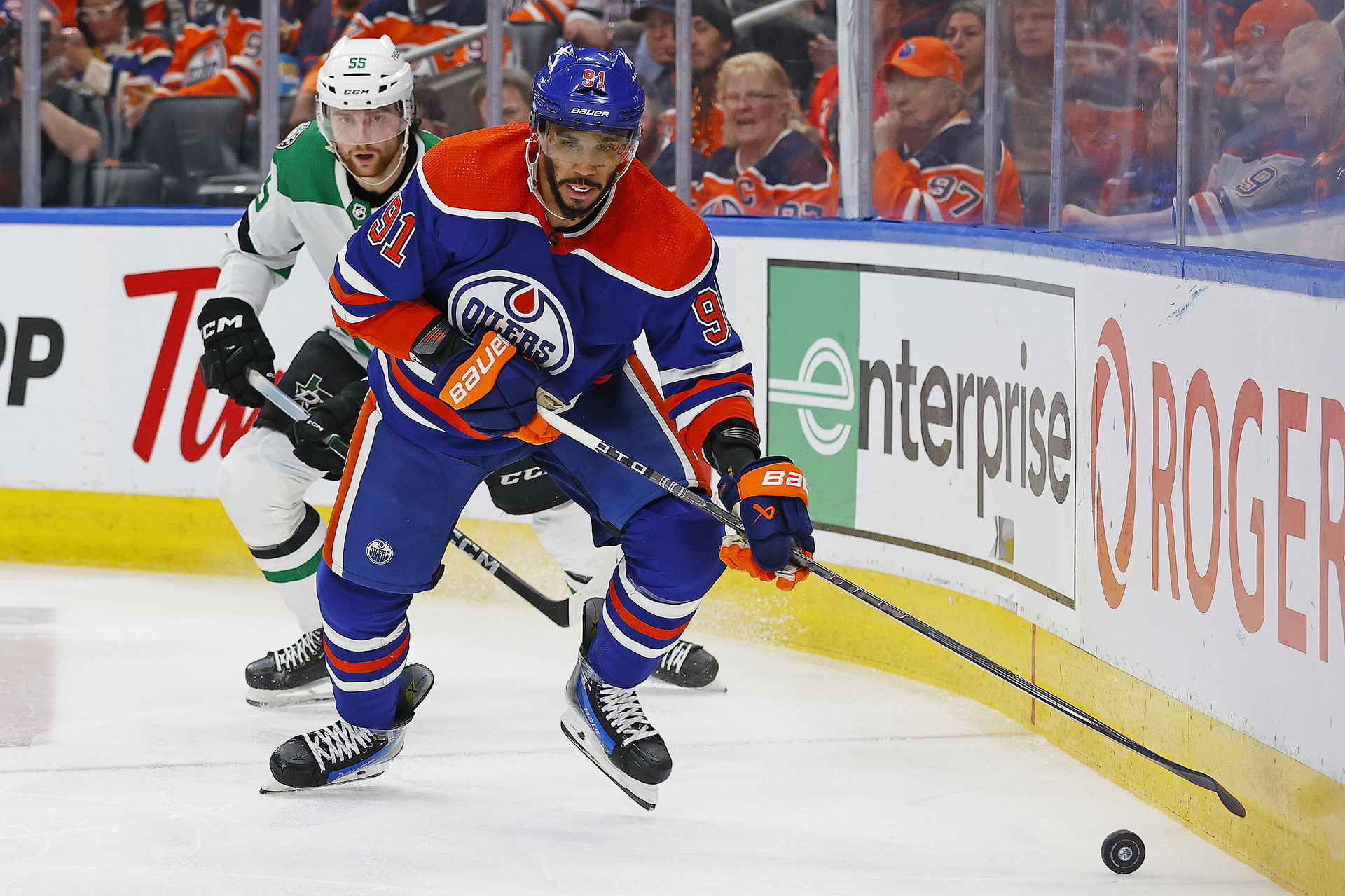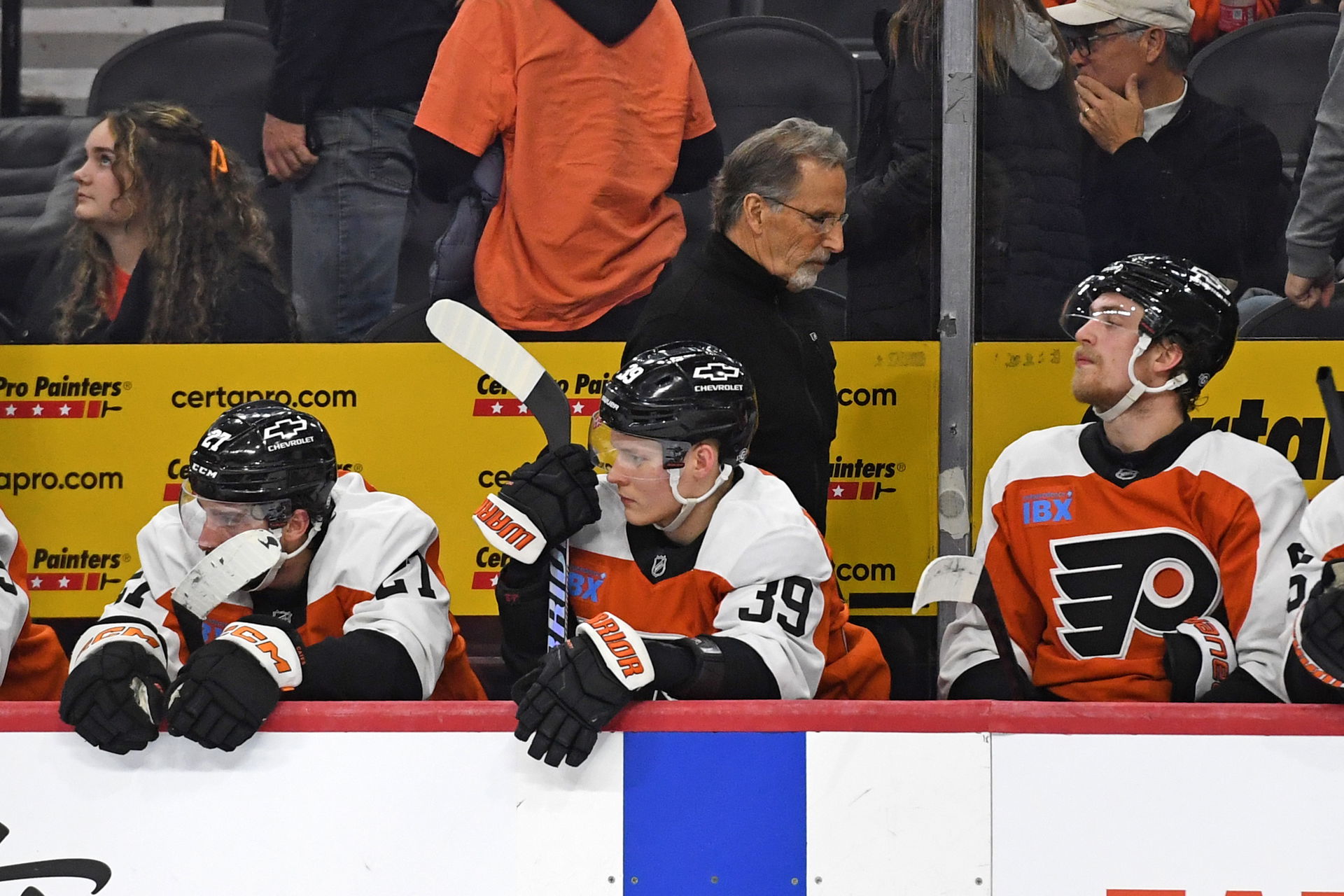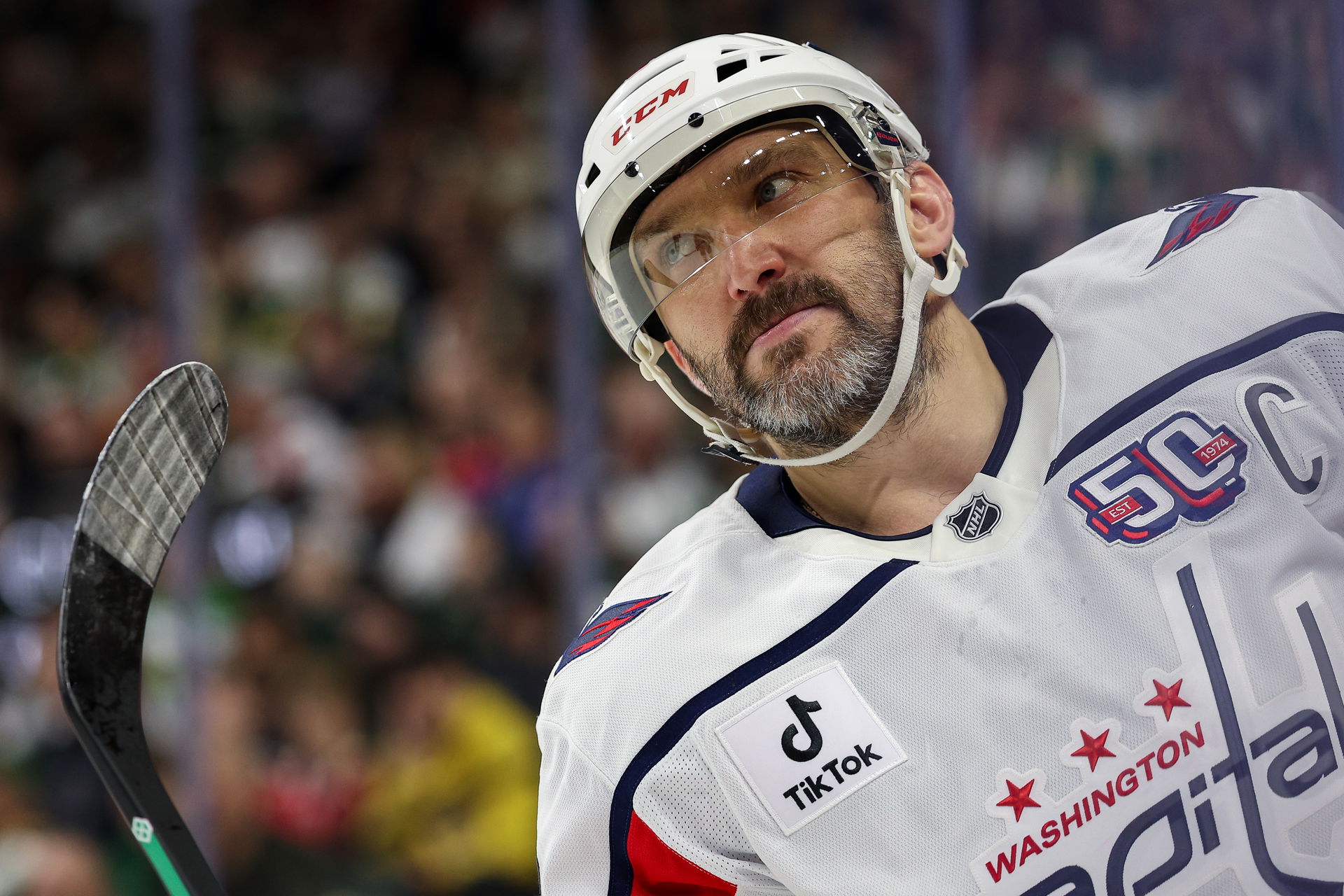
Sharks’ Martin reportedly a buyout candidate — who else could be on the chopping block?
The San Jose Sharks and Paul Martin are reportedly headed towards a split this summer by way of a buyout. Martin’s not alone on the chopping block, though. Here are five others who could join him in being bought out this off-season.
Two seasons ago, as the San Jose Sharks marched their way to the Stanley Cup final, Paul Martin was a top-four defenseman who logged 20-plus minutes per game throughout the regular season and through to the end of the playoffs. After sitting in the press box for the majority of the past season, though, it appears Martin has gone from reliable veteran rearguard to prime buyout fodder.
Martin, 37, had a rocky 2017-18 campaign that saw him slip down the Sharks’ depth chart and into a suit and tie instead of jersey and skates for much of the season. After missing 24 games with an ankle injury right out of the gate, Martin wound up returning for a one-game stint with the big club before winding up a scratch in early December. And a scratch Martin remained for more than three months, even finding himself waived by San Jose in mid-January without any takers. When the campaign closed, Martin averaged 14:46 per game — and 13:40 in the playoff action he saw — which were career lows for the blueliner.
So, with that in mind, it came as no surprise when The Athletic’s Kevin Kurz reported there is a “strong possibility” that Martin will wind up a free agent this summer by way of a buyout from the Sharks. As it stands, Martin is set to enter the final year of a four-year, $19.4-million pact he signed with San Jose in July 2015.
One can see why the buyout is a good option for San Jose, too. Ridding themselves of Martin’s contract does come with some decent savings for the Sharks for the upcoming season, as it would see San Jose save $2.83 million against the salary cap this coming season. That would give a team that is projected to have about $7.5 million in cap space — before any rise in the spending limit — room to ink another player or throw a bit more cash at a noteworthy free agent. (Hello from sunny San Jose, John Tavares. Nice to meet you, Ilya Kovalchuk.)
Troy Brouwer, Calgary Flames
A no-brainer buyout candidate, particularly given he’s coming off of the worst offensive season of his entire career. Brouwer, 32, failed to hit even the 10-goal plateau for the first time in his career and he finished the season with 22 points in 76 games. To put those numbers into context, Brouwer had 13 more goals and 11 more points during the lockout-shortened 2012-13 campaign. It’s no wonder then that Brouwer saw his average ice time dip below 14 minutes per game this past season.
Brouwer is a prime buyout candidate, too, because it’s hard to justify his level of production when he’s earning $4.5 million per season in each of the next two campaigns. Sure, there’s always the chance he finds his game under new Flames coach Bill Peters, but the $3 million in savings in each of the next two seasons could go a long way in Calgary, even if they’ll be punished with $1.5 million of dead cap space in 2020-21 and 2021-22 should they buy Brouwer out.
Braydon Coburn, Tampa Bay Lightning
Remaining a consistent contender for the Stanley Cup in the Eastern Conference has seen Tampa Bay’s salary cap situation get a bit dicey at times, and the Lighting aren’t exactly heading into the summer with much room to improve and add. Currently projected to have $6.9 million in cap space, and a few million more when the cap rises, Tampa Bay needs to address its blueline and add another top-four defender while also retaining the services of J.T. Miller, who is fresh off of a career year, and locking up a few others.
With that in mind, buying out the final year of Coburn’s deal might be the best option for the Lightning. The 33-year-old is the fourth-highest paid rearguard in Tampa Bay, set to earn $3.7 million next season, but that’s a big price to pay for a blueliner whose ice time has steadily declined in each of the past three seasons. There’s some considerable savings to be had, too. Nearly $2.5 million would come off the books for the Lightning — more than enough to bring back Cedric Paquette and foot some of Miller’s bill — and Tampa Bay would only be dinged for $1.23 million next season.
Tyler Ennis, Minnesota Wild
Ennis, 28, had a rough go of things during his final two years in Buffalo, missing nearly an entire campaign due to injury and scoring just eight goals and 24 points in 74 games. There was hope, however, that his addition in the Marco Scandella-Marcus Foligno swap would help spark an offensive resurgence for the three-time 20-goal scorer.
That was not the case, though. Ennis saw his ice time dip to that of a borderline fourth-liner, skating about 12 minutes per outing with the Wild last season, and though he chipped in eight goals and 22 points, it was hardly the performance for which Minnesota was hoping. The writing was on the wall, too, when Ennis sat out all but one of the Wild’s post-season outings and skated just seven minutes in the game he did see.
There’s some serious coin to be saved in buying out Ennis, too, and it might be one of the most sensible buyouts in the league should it happen. With Ennis off the books, the cap-strapped Wild would have close to another $2.5 million to play with this summer. And while it would cost Minnesota $1.2 million in 2019-20, the extra money now is going to help lock up restricted free agents Jason Zucker and Matt Dumba.
Jori Lehtera, Philadelphia Flyers
Lehtera was nothing but a throw-in when Flyers and Blues made a huge swap at the 2017 draft that sent Brayden Schenn to St. Louis in exchange for a couple of first-round selections. Acquiring the 30-year-old backfired on Philadelphia, though, because instead of finding any semblance of the offense that made him a standout summer signing for St. Louis back in 2014-15, Lehtera regressed further and had an absolutely woeful season. In 62 games, he scored three goals and eight points while averaging 10:31 per game. And how much did he earn for that effort? $4.7 million. So, yeah, this might be a contract that Flyers want to consider paying to make disappear.
Philadelphia could really use the money to make some big plays in the off-season, as well. If the contract is bought out, the Flyers will save $3.33 million next season with $1.67 million in dead space the following campaign. That extra money would add to Philadelphia’s already significant $17.2 million in cap space. The Flyers could then use that space to chase free agents up front and on the back end, and maybe even add a goaltender to the mix to bridge the gap between now and Carter Hart’s presumed shot at the starting gig in the not-too-distant future.
Brooks Orpik, Washington Capitals
No one wants to rain on the Capitals’ Stanley Cup parade, but the business of the game doesn’t stop for anyone. Case in point, in the moments following Washington’s win in Game 5, GM Brian MacLellan was asked what the future held for coach Barry Trotz, whose contract is up come July. But what happens with Trotz could be out of MacLellan’s control, particularly if he wants to head elsewhere. What MacLellan can control, though, is what his roster looks like next season, and it might be best for Washington if it doesn’t include Orpik and his $5.5 million cap hit.
The 37-year-old played his part in the Capitals’ Cup victory, no doubt, but buying out the final year of Orpik’s deal would give Washington $3 million in additional cap space as they head into the summer signing season with only a $1.5 million hit in 2019-20. MacLellan should be after any extra money he can find, too, with contract considerations for Tom Wilson, Jay Beagle, Devante Smith-Pelly, Michal Kempny and, most importantly, John Carlson on the horizon. Washington has a projected $11.2 million with which to work, but an additional $3 million plus a rise in the cap could give the Capitals more than enough money to retain the key cogs from their Cup-winning roster and even add a secondary piece or two.
Want more in-depth features and expert analysis on the game you love? Subscribe to The Hockey News magazine.







